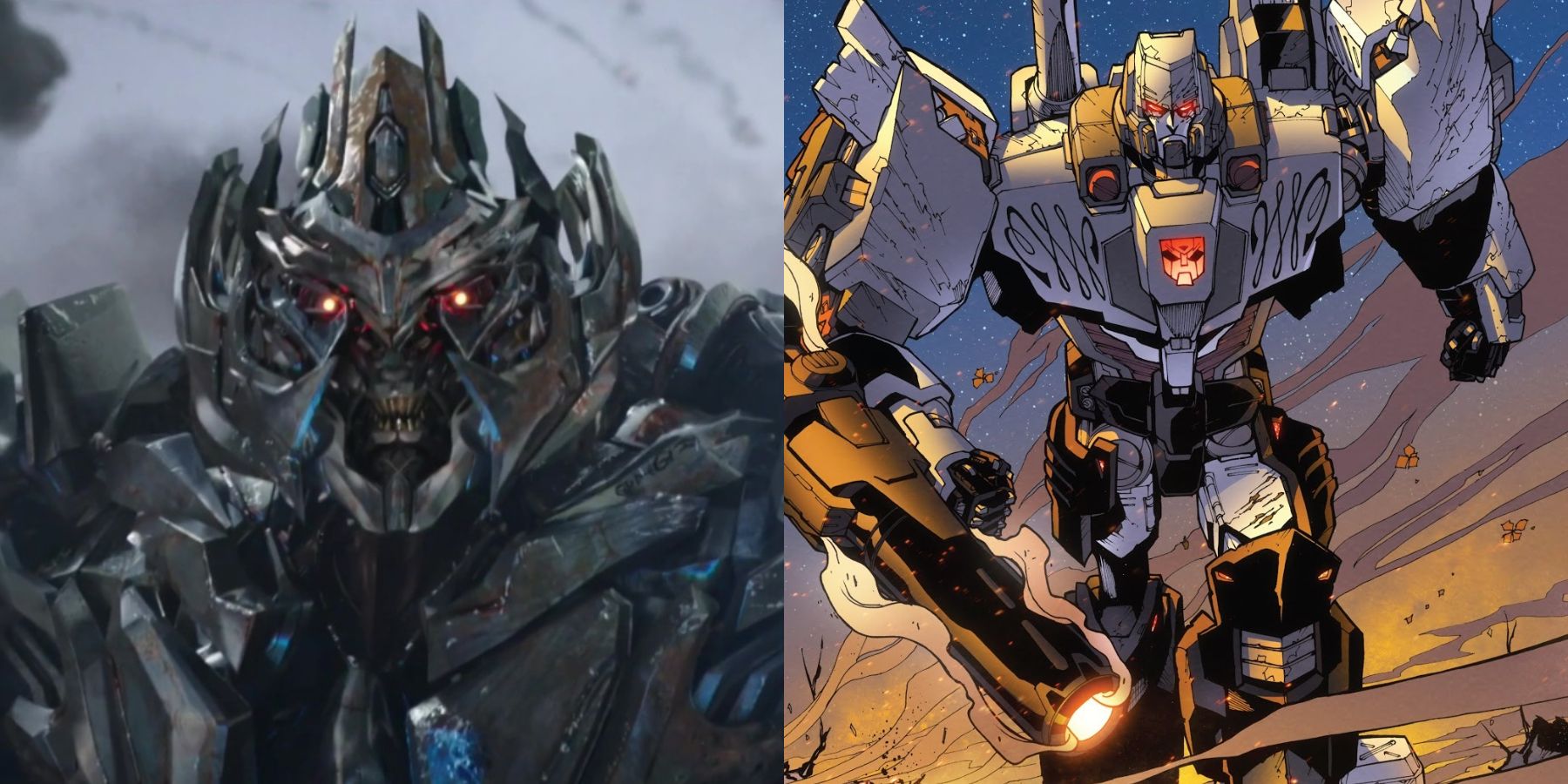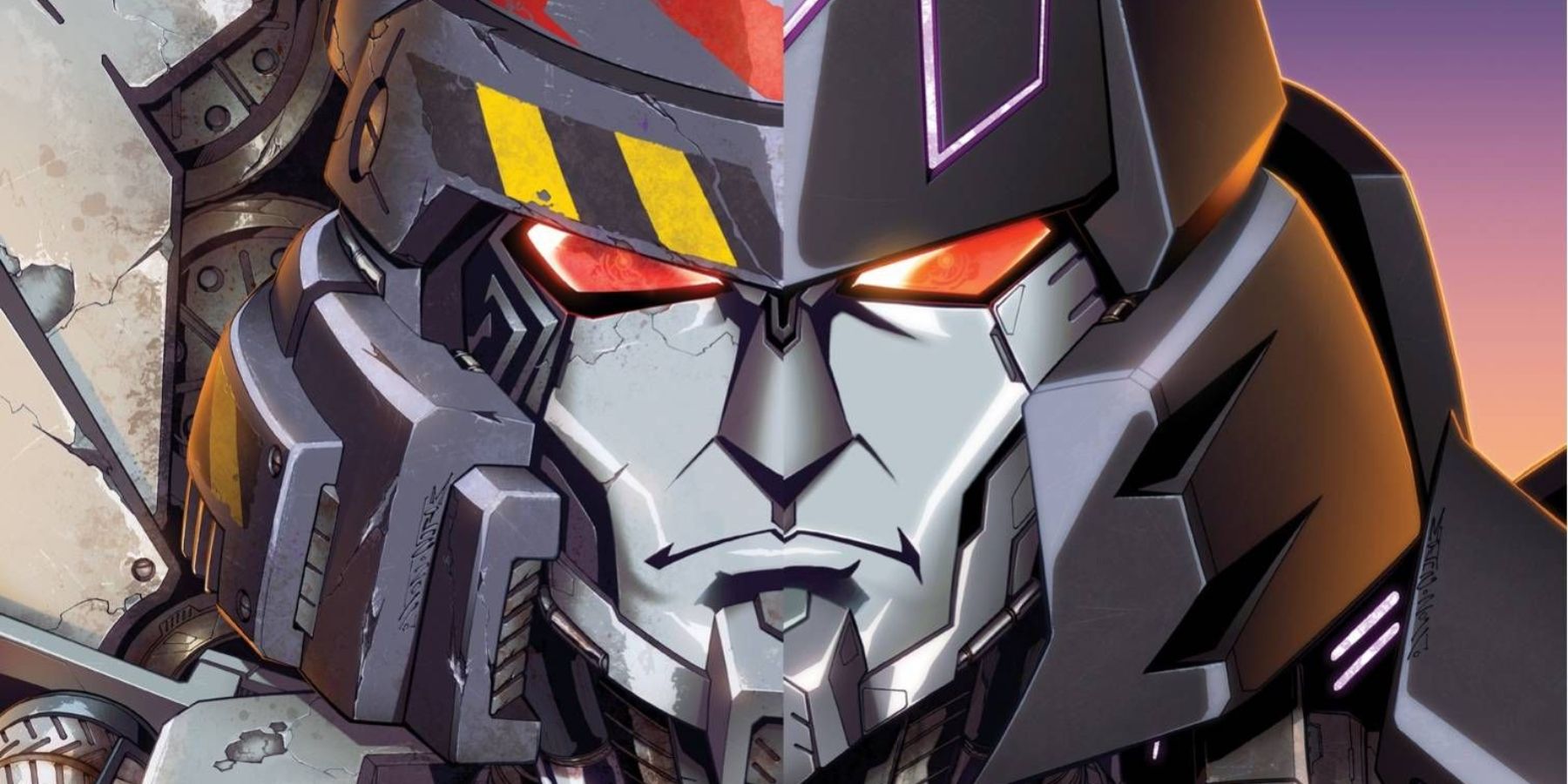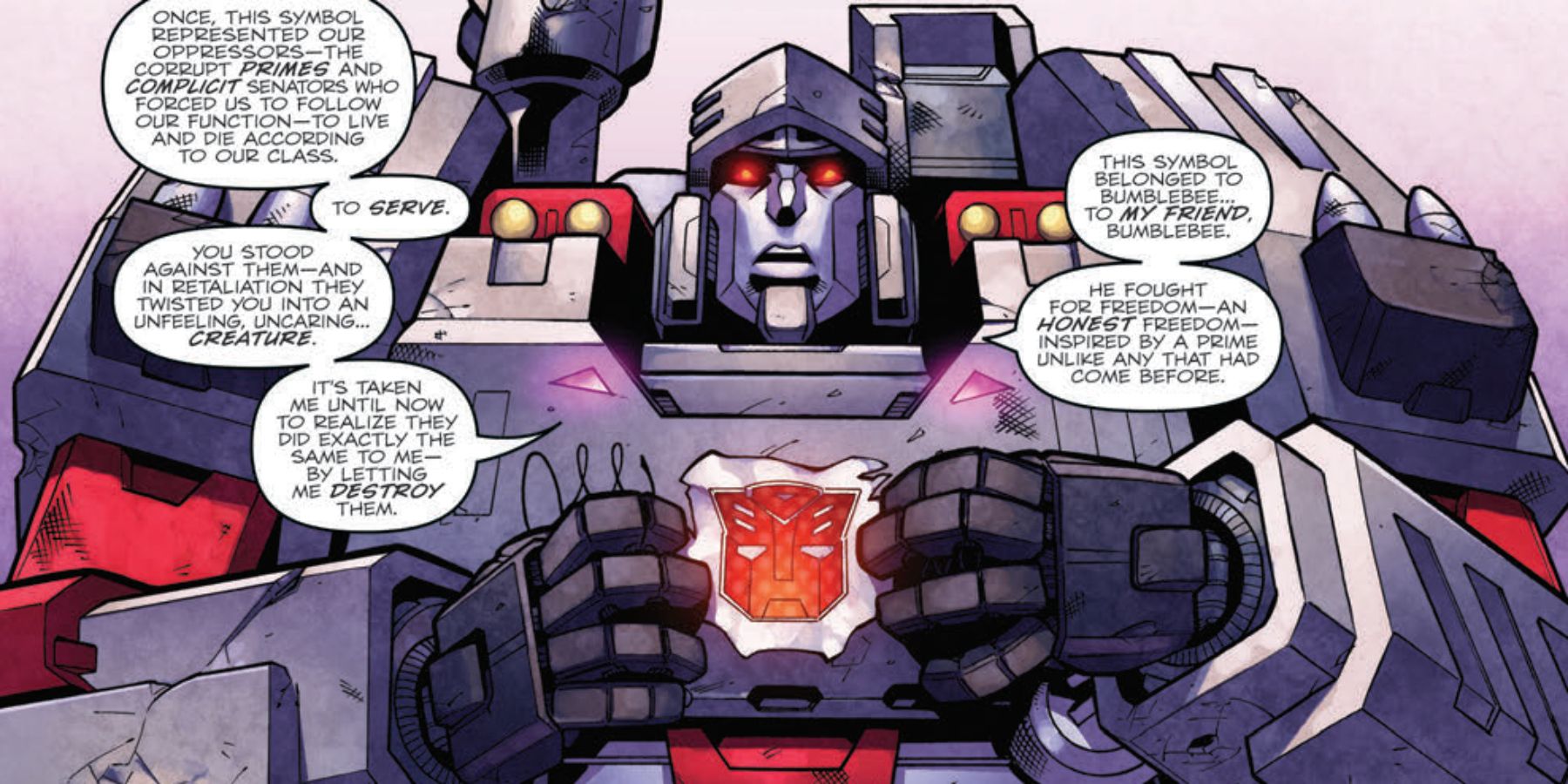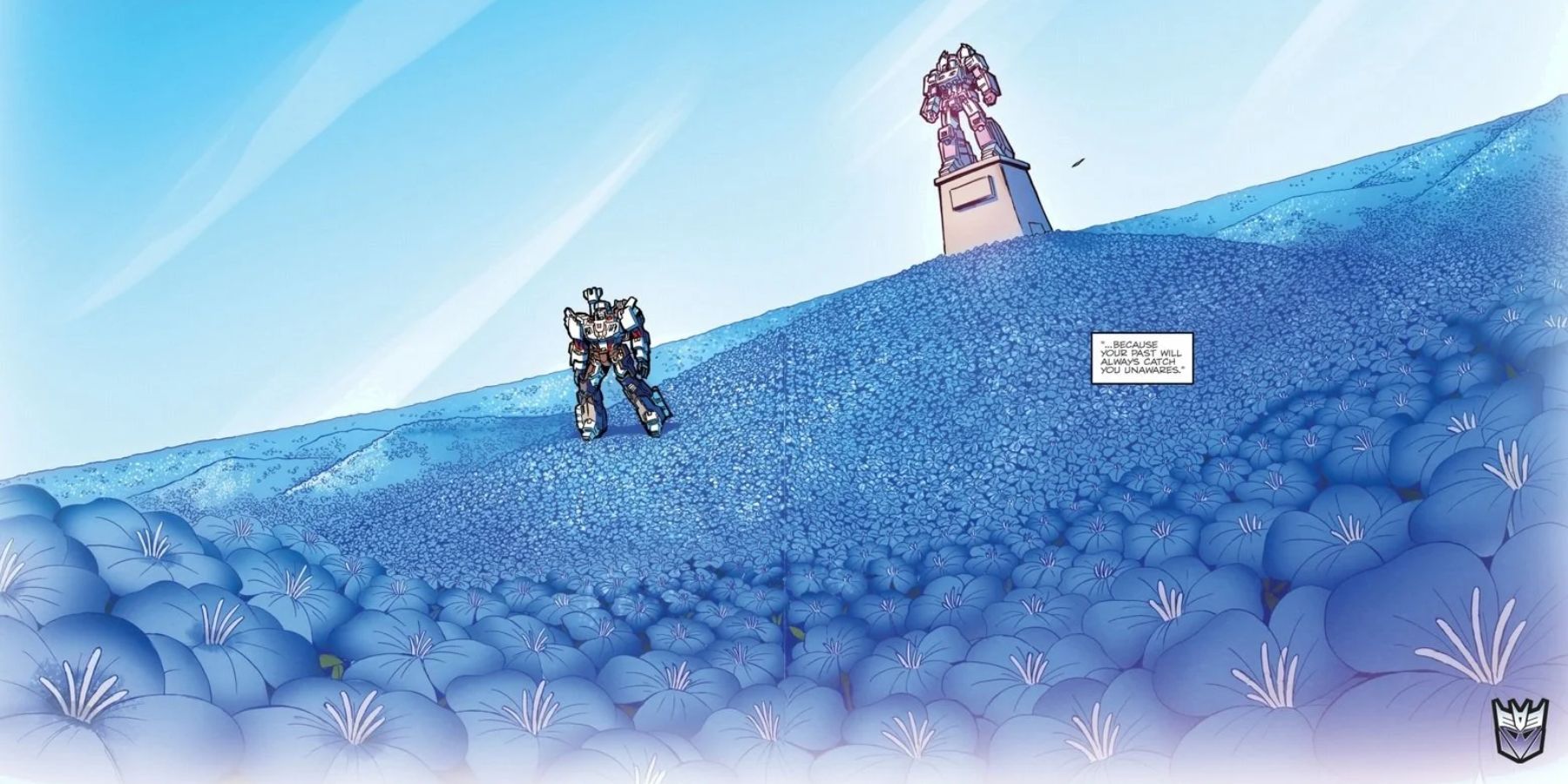The Transformers franchise has featured no shortage of beloved characters, from the heroic Optimus Prime to the courageous Bumblebee to the scheming Starscream. And of course, there’s the most iconic villain in the entire series — the despotic Decepticon leader, Megatron.
However, even though Megatron has appeared in every Transformers film to date (except 2018’s Bumblebee), all of his big-screen appearances have depicted him as little more than a two-dimensional conqueror. And while that portrayal is certainly accurate to the original cartoon Megatron, the character has received much more compelling portrayals in recent media. In order to understand the kind of character that Megatron could be in the movies, it’s time to take a look at the kind of character he’s become in the comics.
The Origin of Tyranny
There have been lots of Transformers comics over the decades, but the ones that have become most popular with the fans come from IDW Publishing’s original continuity, which ran from 2005 to 2018. The IDW comics feature a new take on the series’ classic characters — heavily based on the original cartoon, but reinvented for modern sensibilities. The backstory for IDW’s Megatron was originally featured in the aptly named Megatron Origin miniseries written by Eric Holmes, but would be fleshed out even further in later stories under the pen of James Roberts.
In this continuity, Megatron started out not as a villain, but as a victim — he was once an ordinary Cybertronian who wanted to be a medic. But thanks to the strict caste system enforced by the power-hungry Senate, Megatron was forced to live as a miner. He decided to vent his frustrations with the status quo by becoming a writer, earning infamy with his political treatise “Towards Peace,” which promoted nonviolent protest as a means to bring about change. But when the Senate learned of Megatron’s growing popularity, they decided to have him assassinated in order to silence the voice of a dissenting public. Megatron was nearly killed by the corrupt cop Whirl, only to be saved by Orion Pax — the robot who would later become Optimus Prime. But although Megatron survived, his brush with death caused him to become disillusioned with his pacifist ideals.
Megatron became convinced that violence was the only way to achieve lasting change, and this new worldview was only encouraged by his fellow miner Terminus. Terminus believed that even after revolution, Cybertron would need a single leader to guide the people from above, and he saw that leader in Megatron. After being laid off from his mining job by order of the Senate, Megatron became a gladiator in the fighting pits of Kaon, where he took out his rage towards the establishment on his opponents. Over time, Megatron gained a loyal following of criminals, dissidents, and other outcasts, who saw him as a savior. Eventually, Megatron’s followers became the revolutionary movement known as the Decepticons — named after their motto, “You are being deceived.”
At first, the Decepticons sought only to overthrow the Senate, bringing freedom and equality to the oppressed people of Cybertron. But thanks to his insatiable thirst for vengeance and his cynical worldview, Megatron slowly became just as obsessed with authority as the regime he despised. After all, he still believed that Cybertron needed a ruler to rally around, and he refused to let anyone but himself be that leader. Before long, Megatron’s goal was no longer equality, but control — in his words, “peace through tyranny.” Megatron’s newfound lust for power caused his former friend Optimus to rise up against him, and the Autobot-Decepticon war began.
After the War
For thousands of years, Megatron’s authoritarian ambitions only became more intense. No longer satisfied with ruling Cybertron, he set his sights on bringing his twisted vision of order to the entire universe, ushering in an eternal empire of “Pax Cybertronia.” However, after the war eventually came to a close, Megatron would find his ideology challenged by a former ally.
The Decepticon mad scientist Shockwave, one of Megatron’s closest lieutenants during the war, enacted his own grab for power during the “Dark Cybertron” storyline, written by James Roberts and John Barber. Carrying out a master plan millennia in the making, Shockwave attempted to harness the energy of the entire universe by destroying it with a black hole, leaving behind only an eternal Cybertron with infinite power to fuel it. Megatron saw his own beliefs reflected in Shockwave’s horrifying actions, taking his ideology of saving Cybertron at any cost taken to its brutally logical extreme.
Thanks to Shockwave’s machinations — and some unexpected compassion from Bumblebee — Megatron finally realized that he’d come to embody the very tyranny he once fought against. In his words: “I lost the war the moment I gave the order to fight.” And so, Megatron renounces the Decepticon cause and takes up the badge of the Autobots, joining forces with his friend-turned-nemesis Optimus Prime to defeat Shockwave and save the universe. However, a despot who claimed countless lives in his war for universal domination isn’t about to be forgiven so easily just because he’s changed sides.
After a long and grueling trial, Megatron manages to escape execution by citing an ancient and forgotten law: in the absence of an impartial jury, a defendant may instead choose to be tried by the Knights of Cybertron, an ancient order of heroes who disappeared millions of years ago. As it happens, the quest of the Knights of Cybertron is the focus of More Than Meets The Eye, the series helmed by James Roberts. And so, starting with issue #28 of MTMTE, Megatron becomes the unlikely co-captain of the starship Lost Light.
Quest for Redemption
Despite being openly despised by nearly the entirety of the Lost Light crew, Megatron quickly proves to be genuine in his desire for redemption. In a heart-wrenching conversation with his loyal servant Ravage, he confesses the immense guilt he feels for the countless atrocities he’s committed. Later, in one of the comic’s most iconic scenes, Megatron stands before a seemingly endless sea of flowers, with each bloom signifying a Cybertronian killed by his hand.
Throughout MTMTE, Megatron faces countless foes who refuse to believe that he has changed. Not only is he targeted by vengeful Decepticon loyalists, he also earns the wrath of bitter Autobots who refuse to forgive him for his crimes, and would rather see him dead than remorseful. Even so, Megatron stays the course. He’s occasionally tempted to return to his old ways, but his reawakened sense of compassion — and his newfound friends on the Lost Light — keep him on the righteous path. He even renounces violence, trading his former motto of “peace through tyranny” for a new creed: “peace through empathy.”
The IDW comics took Megatron from a generic cartoon villain to a truly complex and compelling character. His story shows that while the road to hell is paved with good intentions, none who seek redemption are incapable of finding it. Unfortunately, none of the Transformers movies have yet to portray Megatron with that level of humanity. It’s unlikely that fans will ever see a Megatron redemption arc on the big screen, but hopefully the next time this metallic despot appears on the big screen, he’ll be depicted with a little more nuance.




